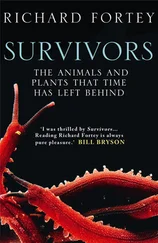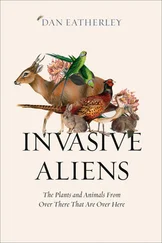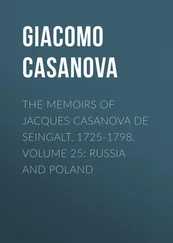Andrew H. Cobb - Herbicides and Plant Physiology
Здесь есть возможность читать онлайн «Andrew H. Cobb - Herbicides and Plant Physiology» — ознакомительный отрывок электронной книги совершенно бесплатно, а после прочтения отрывка купить полную версию. В некоторых случаях можно слушать аудио, скачать через торрент в формате fb2 и присутствует краткое содержание. Жанр: unrecognised, на английском языке. Описание произведения, (предисловие) а так же отзывы посетителей доступны на портале библиотеки ЛибКат.
- Название:Herbicides and Plant Physiology
- Автор:
- Жанр:
- Год:неизвестен
- ISBN:нет данных
- Рейтинг книги:5 / 5. Голосов: 1
-
Избранное:Добавить в избранное
- Отзывы:
-
Ваша оценка:
- 100
- 1
- 2
- 3
- 4
- 5
Herbicides and Plant Physiology: краткое содержание, описание и аннотация
Предлагаем к чтению аннотацию, описание, краткое содержание или предисловие (зависит от того, что написал сам автор книги «Herbicides and Plant Physiology»). Если вы не нашли необходимую информацию о книге — напишите в комментариях, мы постараемся отыскать её.
Discover the latest developments in herbicide and weed biology Herbicides and Plant Physiology,
Arabidopsis
Herbicides and Plant Physiology
Herbicides and Plant Physiology — читать онлайн ознакомительный отрывок
Ниже представлен текст книги, разбитый по страницам. Система сохранения места последней прочитанной страницы, позволяет с удобством читать онлайн бесплатно книгу «Herbicides and Plant Physiology», без необходимости каждый раз заново искать на чём Вы остановились. Поставьте закладку, и сможете в любой момент перейти на страницу, на которой закончили чтение.
Интервал:
Закладка:
5 Chapter 5Table 5.1 Examples of the measurement of photosystem activity in vitro by ox...Table 5.2 Characteristics of mutants with amino acid substitutions in D1.
6 Chapter 6Table 6.1 Structure of some diphenyl ether peroxidising herbicides.Table 6.2 Structures of some PROTOX inhibitors.Table 6.3 Representative synthetic HPPD inhibitors.
7 Chapter 7Table 7.1 Most commonly used herbicide active ingredients in the USA Agricu...Table 7.2 Structures of auxin‐type herbicides.Table 7.3 Some examples of weed seedlings controlled by auxin‐type herbicid...
8 Chapter 8Table 8.1 Structures of graminicides.Table 8.2 Forms of ACCase found in higher plants.Table 8.3 Sensitivity of ACCase I and II from Lolium multiflorum biotypes to...Table 8.4 Effect of haloxyfop and tralkoxydim on plant growth (ED 50) and in...
9 Chapter 9Table 9.1 Typical symptoms following glyphosate treatment.Table 9.2 Structures of a selection of amino acid biosynthesis inhibitors at...
10 Chapter 10Table 10.1 Structures of herbicides that interfere with microtubule assembly...
11 Chapter 12Table 12.1 The diversity and complexity of post‐translational modifications.
12 Chapter 13Table 13.1 Number of herbicide‐resistant weeds reported by country.Table 13.2 A selection of mutations that confer target site resistance to AL...Table 13.3 Photoreduction of DCPIP by thylakoids isolated from atrazine‐resi...Table 13.4 Weed species for which glutathione S ‐transferases (GSTs) and/or P4...Table 13.5 Genes for herbicide metabolism in herbicide‐resistant weeds, acco...Table 13.6 Weed species or genera in Europe with inherent risk of evolving h...
13 Chapter 14Table 14.1 List of species that have been genetically modified (GM) for herb...Table 14.2 List of herbicides used in commercialised GM‐HT crops.Table 14.3 Hectares grown of the top four GM crops in 2018 (ISAAA, 2018).Table 14.4 Kinetic properties for selected EPSP synthases. Ki/Km (PEP) is a m...Table 14.5 Menacing images of food biotechnology in Europe (1996–2002).
14 Chapter 15Table 15.1 Proteosome subunits with known roles in tolerance to environmenta...Table 15.2 Physiological properties of some essential oils.
List of Illustrations
1 Chapter 1 Figure 1.1 Germination periods of some common annual weeds. A greater width ... Figure 1.2 Some methods of weed seed dispersal with their estimated range in... Figure 1.3 Factors affecting the soil seed population. Figure 1.4 Expected rates of photosynthesis (PS) by C 3and C 4plants at (a) ... Figure 1.5 Effect of black‐grass density on the growth and yield of winter w...
2 Chapter 2 Figure 2.1 Typical cumulative cash flow for a successful new product.Figure 2.2 Modern herbicide screening.Figure 2.3 Information needed to optimise herbicide development.Figure 2.4 Herbicide mode of action.Figure 2.5 Relationship between herbicide mobility, log K owand p K a. (After ...Figure 2.6 Herbicide metabolism in relation to selectivity. Points A–D are s...
3 Chapter 3Figure 3.1 The upper leaf surface of fat hen ( Chenopodium album L.) as shown...Figure 3.2 A generalised scheme of cuticle structure.Figure 3.3 An overview of the three primary pathways of epicuticular wax bio...Figure 3.4 Effect of log P owand Δlog P on foliar uptake through the cuticle v...Figure 3.5 Schematic representation of droplets on a leaf surface in the abs...Figure 3.6 Structure of ethoxylated trisiloxanes in Silwet L‐77. When n = 2,...Figure 3.7 Accumulation of a weak acid (pK a4.0) within root cells by the io...Figure 3.8 Cross‐section of a dicotyledonous root, showing the position of t...Figure 3.9 Structures of a typical phenoxyalkanoic acid (2,4‐D) and an arylo...Figure 3.10 The quatemary salt of 2,4‐DFigure 3.11 Examples of some low volatility esters used in herbicide formula...Figure 3.12 Butoxy‐methyl ethyl ester of fluroxpyr.Figure 3.13 The formulation of glyphosate.Figure 3.14 Structure of amido propylamines, where R1 can be C8/C10, COCO or...
4 Chapter 4Figure 4.1 Bioactivation of inactive pro‐herbicides to active molecules.Figure 4.2 A diagrammatic representation of plant P450 and P450 reductase en...Figure 4.3 The haem‐binding sequence that is characteristic of all P450s.Figure 4.4 Nomenclature for naming P450 genes.Figure 4.5 The main reactions carried out by cytochrome P450 monooxygenases ...Figure 4.6 Metabolism of bentazone in tolerant plant species.Figure 4.7 A schematic representation of the different phases of herbicide m...Figure 4.8 Cereal crop selectivity to a theoretical herbicide in the presenc...Figure 4.9 Structures of tetcyclasis, 1‐aminobenzotriazole and tridiphane....Figure 4.10 A generalised summary of safener and synergist action.
5 Chapter 5Figure 5.1 Leaf structure in Galium aparine (cleavers). (A) Leaf arrangement...Figure 5.2 Structural (A) and functional (B) models of Photosystem II. Numbe...Figure 5.3 Structural (A) and functional (B) models of Photosystem I. Number...Figure 5.4 Schematic representation of the light‐harvesting and photosystem ...Figure 5.5 DCPIP decolourisation in the presence of functioning thylakoids....Figure 5.6 Proposed interaction between plastoquinone (A) and atrazine (B) w...Figure 5.7 The D1 polypeptide. (A) Schematic arrangement of the protein in t...Figure 5.8 The structures of atrazine and BW314.Figure 5.9 Damage–repair cycle in Photosystem II.Figure 5.10 Detail of the environment surrounding the lipophilic group in th...Figure 5.11 Examples of herbicide classes in the serine family.Figure 5.12 Essential features of the phenol‐type ‘histidine’ herbicides....Figure 5.13 Structures of the ‘histidine’ family of herbicides: the hydroxyb...Figure 5.14 A selection of herbicides that inhibit Photosystem II electron f...Figure 5.15 How paraquat and diquat act at Photosystem I to give rise to act...Figure 5.16 Structures of new Photosystem II herbicides.Figure 5.17 Carbamylation of lysine activates RuBisCo.Figure 5.18 Bonding orbitals in diatomic oxygen.Figure 5.19 Generation of singlet oxygen by photosensitisers.Figure 5.20 Superoxide generation and detoxification at Photosystem I. PQ, p...Figure 5.21 The fates of solar energy absorbed by the thylakoid light‐harves...Figure 5.22 The chain reaction of thylakoid lipid peroxidation.Figure 5.23 Ultrastructural symptoms following treatment with photosynthetic...Figure 5.24 A characteristic fluorescent transient or Kautsky curve induced ...Figure 5.25 Structures of two chalcone derivatives as potential inhibitors o...
6 Chapter 6Figure 6.1 Structures of the major chlorophylls and carotenoids.Figure 6.2 Biosynthesis of δ ‐aminolaevulinic acid (ALA) and porphobilin...Figure 6.3 An overview of porphyrin biosynthesis in the presence (dashed lin...Figure 6.4 Structure of saflufenacil, indicating structure‐activity relation...Figure 6.5 Protection of chlorophyll (Chll) by carotenoids (car).Figure 6.6 The xanthophyll cycle.Figure 6.7 Carotenoid biosynthesis.Figure 6.8 Structures of five commercialised inhibitors of phytoene desatura...Figure 6.9 The role of plastoquinone in carotenoid biosynthesis and its rege...Figure 6.10 Synthesis of homogentisic acid from tyrosine.Figure 6.11 Structures of HPPD inhibitors referred to in the textFigure 6.12 Nitisinone.Figure 6.13 Metabolism of isoxaflutole in crops and weeds.Figure 6.14 Metabolism of sulfentrazone in soybean.Figure 6.15 Pathways of carotenoid and plastoquinone biosynthesisFigure 6.16 Structures of herbicides that inhibit 1‐deoxy‐D‐xylulose‐5‐phosp...
7 Chapter 7Figure 7.1 Ethylene evolution by scentless mayweed following application of ...Figure 7.2 Effect of exogenous auxin (IAA) on growth (solid curves) and ethy...Figure 7.3 The control of auxin concentration in vivo .Figure 7.4 Auxin biosynthesis and metabolism (see text for details)Figure 7.5 Structures of indole‐3‐butyric acid (IBA), 4‐chloroindole‐3‐aceti...Figure 7.6 A topographic model of the auxin receptor viewed from the side. T...Figure 7.7 Structures of the methyl ester of dichlorprop (which controls dic...Figure 7.8 A simplified model describing how auxin concentration controls ge...Figure 7.9 A speculative view of the immediate consequences of auxin binding...Figure 7.10 Approximate differences in electrical potential and pH in a plan...Figure 7.11 Dose–response curves for auxin‐induced proton‐efflux.Figure 7.12 The chemiosmotic model for polar auxin (IAA) transport in xylem ...Figure 7.13 The structure of diflufenzopyr (BAS 662 H).Figure 7.14 Effect of clopyralid (100 g a.i. ha −1) on rate of photosyn...Figure 7.15 Typical symptom development of auxin‐type herbicides. Plants of Figure 7.16 The use of autoradiography to study the translocation patterns o...Figure 7.17 Pathways of metabolism of (A) MCPA and (B) 2,4‐D.Figure 7.18 Bioactivation of MCPB in susceptible broadleaf weeds.Figure 7.19 The effect of β ‐oxidation on phenoxyacids containing an odd...
Читать дальшеИнтервал:
Закладка:
Похожие книги на «Herbicides and Plant Physiology»
Представляем Вашему вниманию похожие книги на «Herbicides and Plant Physiology» списком для выбора. Мы отобрали схожую по названию и смыслу литературу в надежде предоставить читателям больше вариантов отыскать новые, интересные, ещё непрочитанные произведения.
Обсуждение, отзывы о книге «Herbicides and Plant Physiology» и просто собственные мнения читателей. Оставьте ваши комментарии, напишите, что Вы думаете о произведении, его смысле или главных героях. Укажите что конкретно понравилось, а что нет, и почему Вы так считаете.











